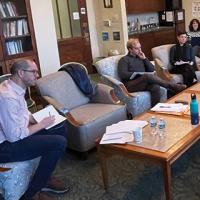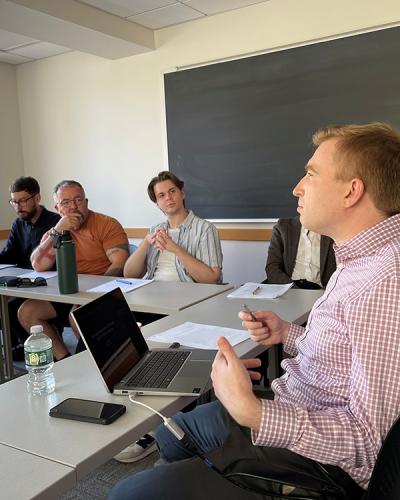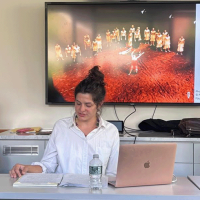On March 23rd, 2018, the IGCS welcomed Katharina Stornig (Justus-Liebig Universität Giessen), who presented her paper titled “The ‘Distant Child’: Religious Engagement and the Globalization of Aid in the Late 19th Century Germany.” Expanding upon the work of her current book project, Stornig’s presentation examined the emergence of transnational aid organizations in Germany, specifically those aimed at invoking the religious commitments of children. In this context, she explored the print material of contemporary Christian charitable organizations that encouraged the depiction of geographically distant believers as members of a globalized religious community. At the center of her paper stands the figure of the ‘distant child,’ which Stornig analyzed as a recurring theme across religious aid organizations, paying special attention to how “the distant child” influenced the education of young Germans, who were discovering their place in an emerging globalized world.
Focusing primarily on German publications of the late nineteenth century, Stornig discovered how the Christian child was treated as a formable individual, which corresponds to the emergence of a new mission aiming to educate young people as members of a universal Christian community. Religious aid organizations promoted a diverse range of children’s periodicals through which young people could come in contact with their Christian counterparts in geographically distant places, such as China and Africa. In doing so, these print sources facilitated an imaginary connection between German children and Christian youth across the world. For example, the Annals of the Holy Childhood was a key periodical through which missionaries in China could relate their work to young Christians in Germany. Moreover, the development of this form of literature was linked to an increased emphasis on the active role that young people played in converting other youths in distant lands, encouraging young readers to materially support their peers through the work of the Church.
Stornig argued that these periodicals sought to universalize the status of Christian children, and invite young readers to identify with their counterparts within an increasingly globalized world. However, Stornig also pointed to the ambiguous status of these periodicals in relation to colonialist hierarchies of race and culture. In many cases, these print media only reinforced the hierarchical dichotomy of white, ‘civilized’ children who are responsible for protecting the distant ‘heathen’ children. However in other cases, Stornig noted the transformative potential of missionary knowledge that shows children as innocent victims of foreign aggressors. From this perspective, the universal figure of the Christian child temporarily undermines the colonial hierarchical dichotomies. Stornig concluded that missionary literature ultimately is a key site in which children play an active role in the process of globalization and thereby contribute to the emergence of an imagined transnational Christian community. (David Dunham)





